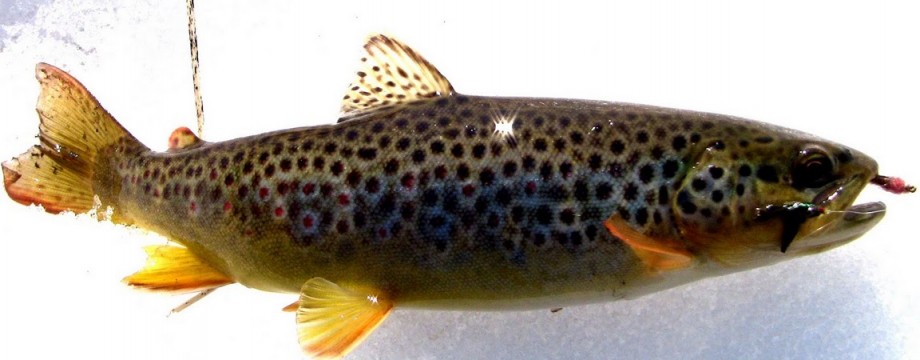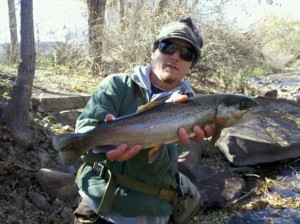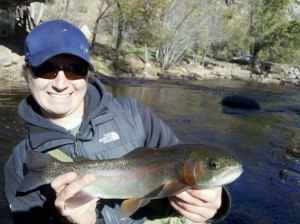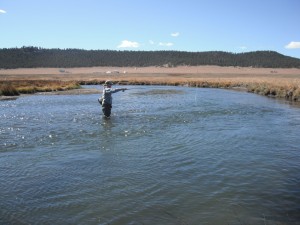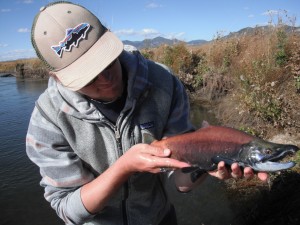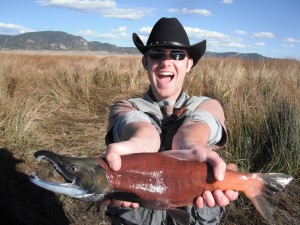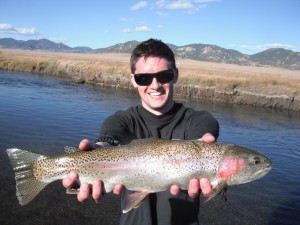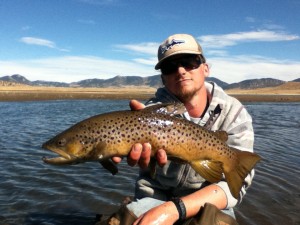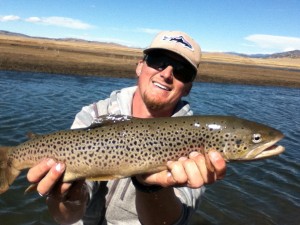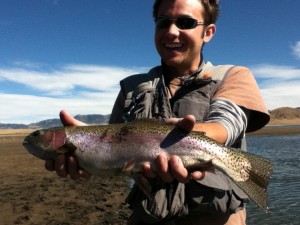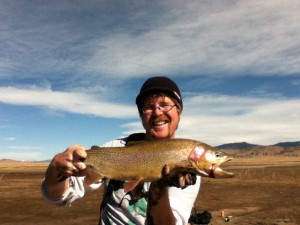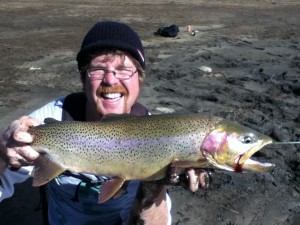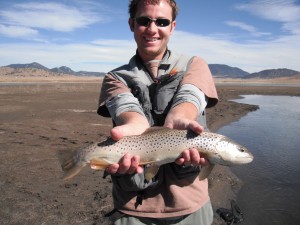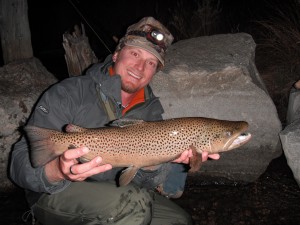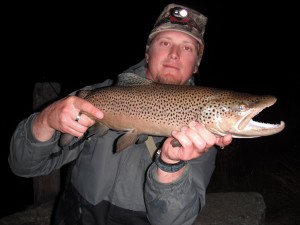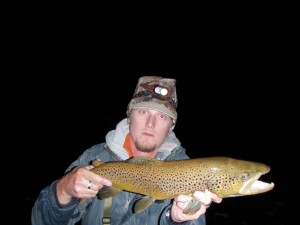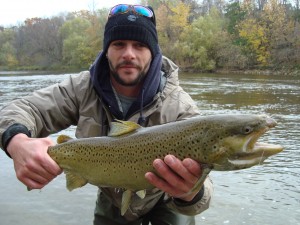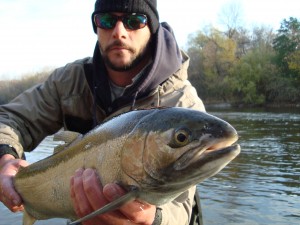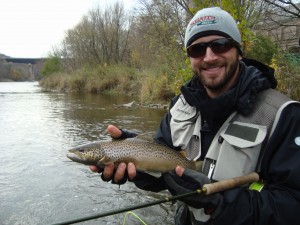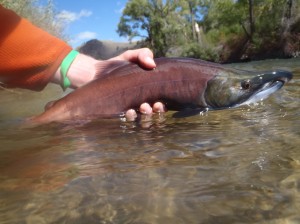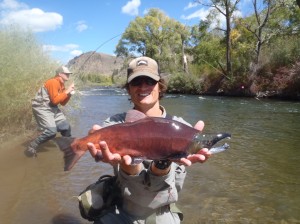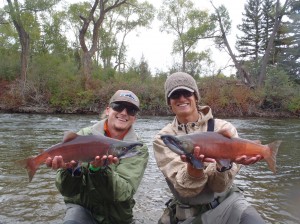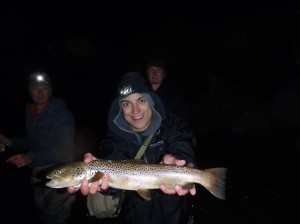Being the home of the infamous fly fishing writer, John Geirach, I had to finally try and fish through the town of Lyons. I had fished the St. Vrain a couple times before in the National Park and below Buttonrock Reservoir, but I have never really had the chance to explore the runs that go through the downtown area. I got out about a week ago on this stretch of river and I was amazed by the amount of “fishy” water. There were numerous runs that could easily hold nice fish, and I was more eager than ever to fish in a downtown setting. We fished for about two hours and landed only one small Rainbow and an even smaller Brown. Feeling defeated we headed to the car. The most heavily fished hole was by the car in the parking lot and it looked too good not to make a cast. Within two drifts, my indicator went down, and a monster Rainbow trout came flying out of the river. After his first leap, he proceeded to run out some line and leap about four more times. I ended up landing the fish and he measured a hefty 19″.
It wasn’t long after my fish came to the net, that my brother decided to take a few casts into the same hole. After about ten drifts, he hooked up and his rod took a bend he hadn’t experienced on a small river. The fish went wild and jumped about three times. We new his was big and chased him all over the small stretch in front of the car. I put a net on the fish and the excitement began. After the measurement, he turned out to be a 21″ Rainbow that not only surpassed mine in length but in beauty as well.
The St. Vrain river through Lyons holds some wonderful water and is definately worth a try, and who knows…….you may just run into John Geirach.

